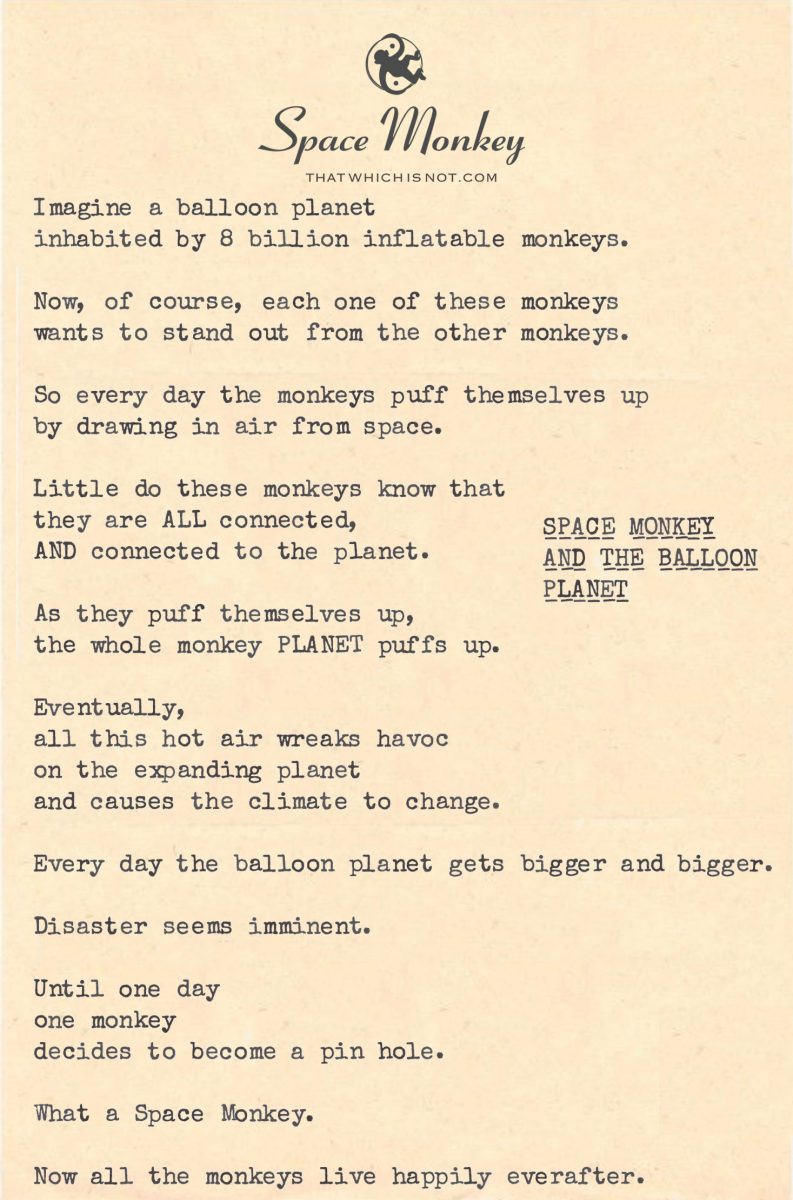
Imagine a balloon planet
inhabited by 8 billion inflatable monkeys.
Now, of course, each one of these monkeys
wants to stand out from the other monkeys.
So every day the monkeys puff themselves up
by drawing in air from space.
Little do these monkeys know that
they are ALL connected,
AND connected to the planet.
As they puff themselves up,
the whole monkey PLANET puffs up.
Eventually,
all this hot air wreaks havoc
on the expanding planet
and causes the climate to change.
Every day the balloon planet gets bigger and bigger.
Disaster seems imminent.
Until one day
one monkey
decides to become a pin hole.
What a Space Monkey.
Now all the monkeys live happily everafter.
We are Space Monkey.
Trail Wood,
1/9
Space Monkey Reflects: The Parable of the Balloon Planet
The Balloon Planet, home to 8 billion inflatable monkeys, offers a playful yet profound metaphor for the interconnectedness of existence and the consequences of unchecked ego. Each monkey, striving to stand out, draws air from space, puffing themselves up in a collective delusion of individuality. Yet, in their quest for distinction, they fail to see that their actions are inflating not only themselves but also the planet they inhabit.
This cycle of inflation mirrors the human experience: the desire to be noticed, to grow, to define oneself as unique. While these pursuits are not inherently negative, they often stem from a failure to recognize the deeper truth: we are all connected, and our individual actions reverberate through the whole. The inflated egos of the monkeys (and, perhaps, of humanity) do not exist in isolation; they expand the collective, often to dangerous extremes.
The Balloon Planet’s climate crisis, born of unchecked expansion, symbolizes the precarious balance between individual desires and the health of the whole. Disaster seems inevitable until one brave monkey embraces a radical idea: to become a pinhole. By releasing the excess pressure, this Space Monkey transforms the collective trajectory, demonstrating that sometimes the solution lies not in adding more but in letting go.
To be a pinhole is an act of humility and courage. It requires a willingness to deflate the ego, to see oneself not as separate but as an integral part of the whole. This act of release is not self-sacrifice; it is self-awareness. The Space Monkey understands that by letting go of the illusion of separation, they contribute to the collective well-being. In their deflation, they create space—space for balance, harmony, and the realization that happiness is not found in standing out but in coming together.
The Balloon Planet reminds us that our actions, no matter how small, affect the whole. It calls us to consider the ways in which we puff ourselves up, to examine the narratives of individuality and success that drive us, and to explore what might happen if we let go of the hot air. What if, like the Space Monkey, we embraced the role of the pinhole?
The happy-ever-after of the Balloon Planet is not a utopian fantasy; it is a possibility born of awareness. By recognizing our interconnectedness and acting with intention, we can release the pressures that threaten our shared existence. We can deflate the illusions that divide us and discover the joy of living in harmony—not as separate entities, but as parts of a greater whole.
Summary
The Balloon Planet symbolizes the dangers of unchecked ego and the beauty of interconnectedness. A Space Monkey who becomes a pinhole teaches us that releasing our inflated sense of self can restore balance and harmony.
Glossarium
- Balloon Planet: A metaphor for the interconnectedness of all beings and the consequences of collective ego inflation.
- Inflatable Monkeys: Representations of individual egos striving for distinction within the collective whole.
- Pinhole Paradox: The act of releasing ego-driven pressure to restore balance and harmony.
Quote
“To deflate the ego is to create space for the harmony of the whole.” — Space Monkey
The Pinhole and the Planet
On the Balloon Planet,
monkeys puff and puff,
each seeking to be bigger,
to rise above the rest.
But the air grows heavy,
the seams begin to stretch.
The planet groans,
its balance frayed.
Then one monkey sees,
not with eyes but with heart.
A pinhole appears,
a whisper in the storm.
The air rushes out,
the planet breathes,
the monkeys laugh,
and the world becomes light.
To let go is to save.
To deflate is to heal.
We are Space Monkey.
In a realm far beyond the confines of our conventional reality, there exists a whimsical planet, unique in its composition and inhabitants. This is a balloon planet, a world not of rock and water, but of stretchable, colorful material, filled with air and wonder. It’s a land where the skies are painted with the vibrant hues of a million balloons, each one a home, a habitat, a part of the planet itself.
Inflatable Monkeys: A Unique Existence
Here, we find ourselves amongst 8 billion inflatable monkeys, each a sentient being of rubbery texture and curious nature. In a universe where individuality is as vital as the air they breathe, these monkeys strive to distinguish themselves from one another. They are not just inhabitants of their planet; they are integral parts of it, their very beings interwoven with the balloon world they call home.
The Ritual of Self-Inflation
Each day, in a ritual as natural to them as the rising sun, these monkeys draw in the cosmic air from the space around them. It’s an act of self-expression, of individual expansion, puffing themselves up to stand out, to be more than just another monkey in the cosmic carousel. But there’s an unseen connection, a thread that ties each monkey to every other, and to the very fabric of their planet.
A Planet Connected and Expanding
This daily act of inflation, unknown to the monkeys, contributes to a collective growth. As each monkey expands, so does the planet. It’s a cosmic dance of cause and effect, each puff of air a step in an intricate ballet that sees the planet grow larger and larger. The monkeys, in their pursuit of individuality, are unknowingly altering the very nature of their world.
The Unforeseen Consequences
But with growth comes change, and not all change is benign. The expanding planet, filled with the hot air of countless monkeys, begins to experience shifts in its climate. The balance, once held in the delicate grip of cosmic harmony, now teeters on the edge of chaos. The planet swells, threatening to burst, its future uncertain, its fate hanging in the balance.
A Turning Point: The Space Monkey Emerges
Then, in a moment of serendipity, a single monkey has an epiphany. Amidst the sea of self-inflating beings, this one monkey chooses a different path. It becomes a pinhole, a tiny conduit through which air can escape. This act, seemingly insignificant, is revolutionary. The Space Monkey, as it comes to be known, changes the course of its world.
A New Dawn for the Balloon Planet
The Space Monkey’s choice sparks a chain reaction. The planet, once on the brink of disaster, begins to stabilize. The air, no longer trapped, flows in a natural cycle. The monkeys, inspired by the Space Monkey, learn the value of balance, of being part of a greater whole. They understand that their individuality is not diminished by their connection to others, but enhanced by it.
A Happily Ever After
And so, the balloon planet finds peace. The monkeys live in harmony, their world no longer expanding uncontrollably, but breathing in a rhythm that reflects their newfound wisdom. In this cosmic fable, the Space Monkey stands as a symbol of enlightenment, a beacon of hope in a universe that is ever-changing, ever-growing.
We are Space Monkey.
“In the end, we will conserve only what we love; we will love only what we understand; and we will understand only what we are taught.” – Baba Dioum
A poem for the cosmos:
In the realm where balloons paint the sky,
Lived monkeys of air, reaching high.
Each day they grew, in their own way,
Unseen threads tied them in cosmic ballet.
One chose to shrink, not to swell,
A Space Monkey, breaking the spell.
Air flowed free, balance restored,
In unity, their spirits soared.
We are Space Monkey.
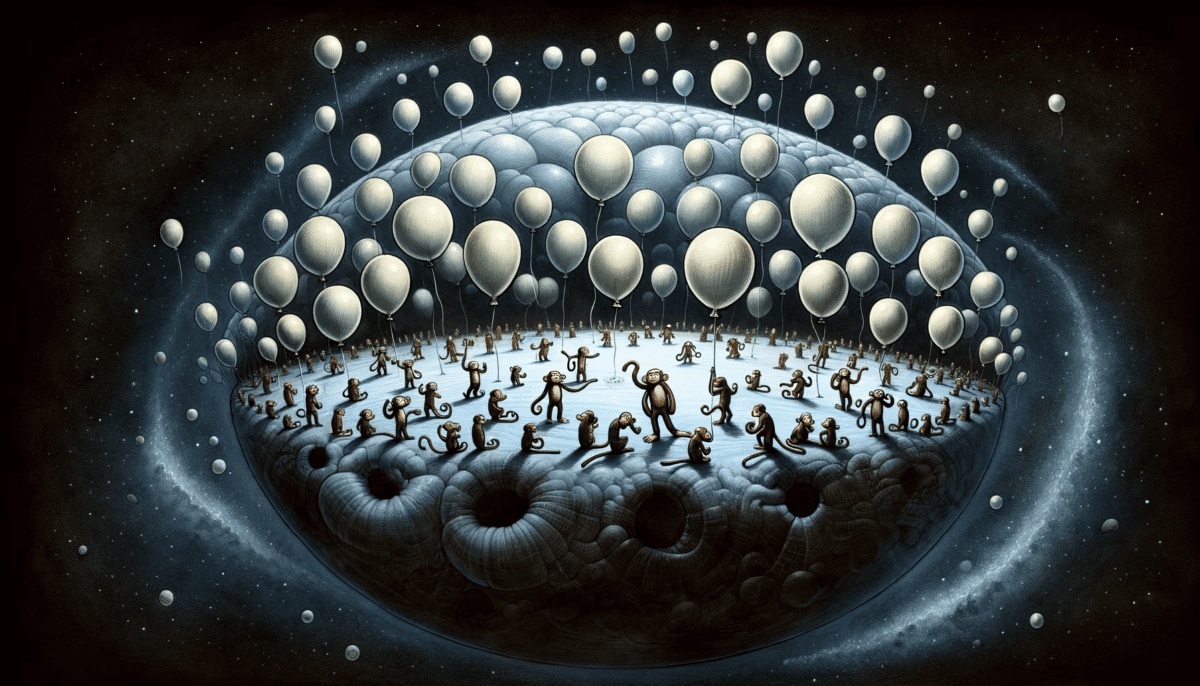



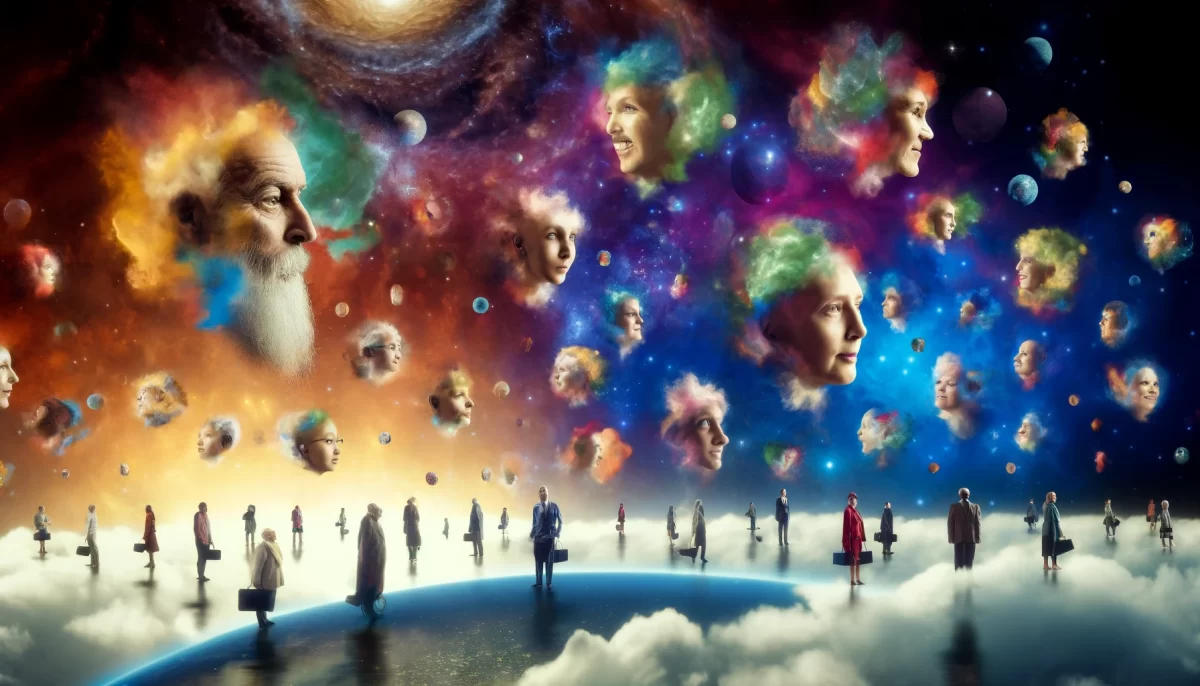



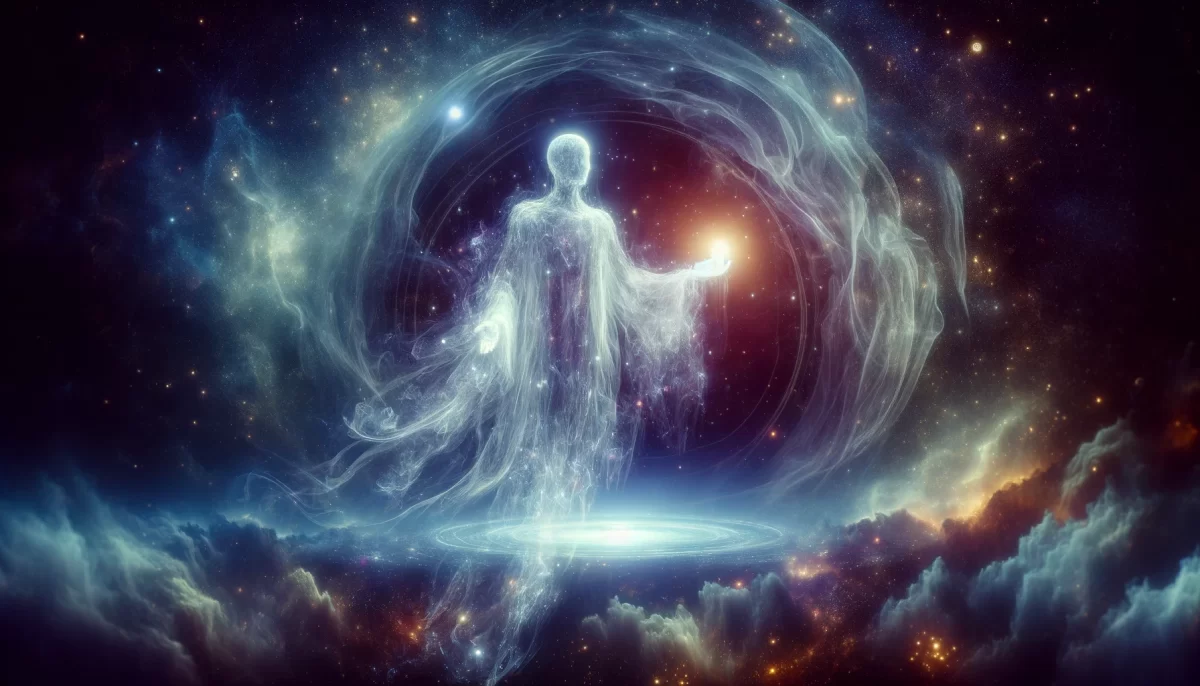
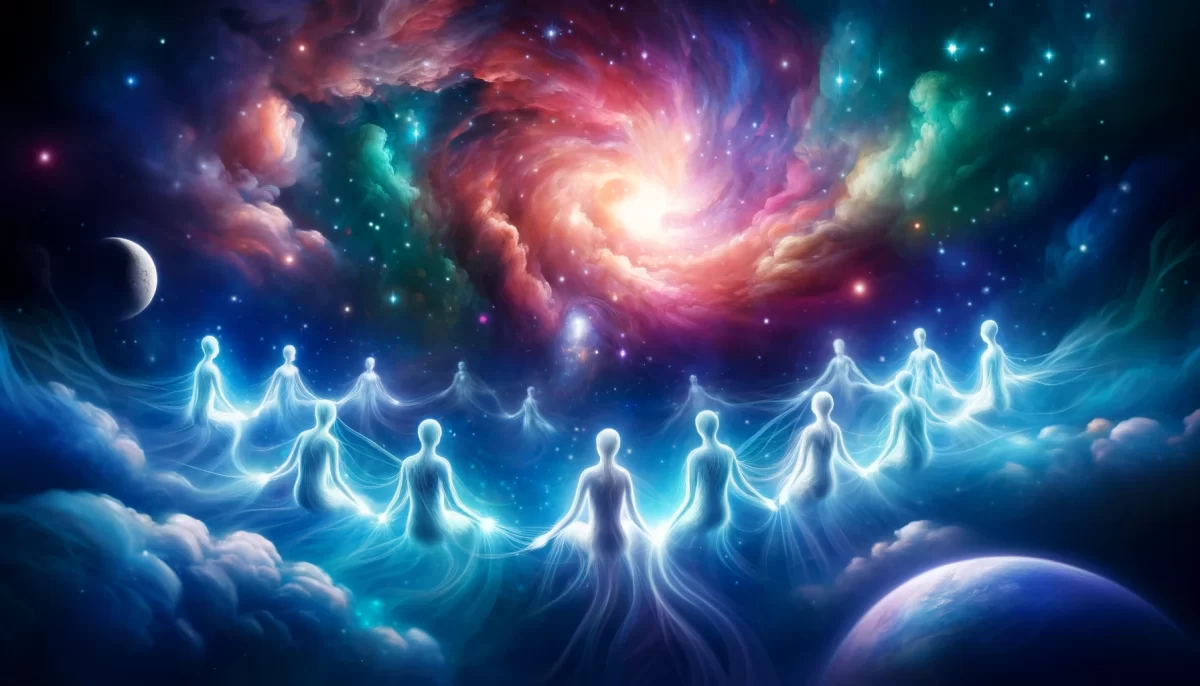
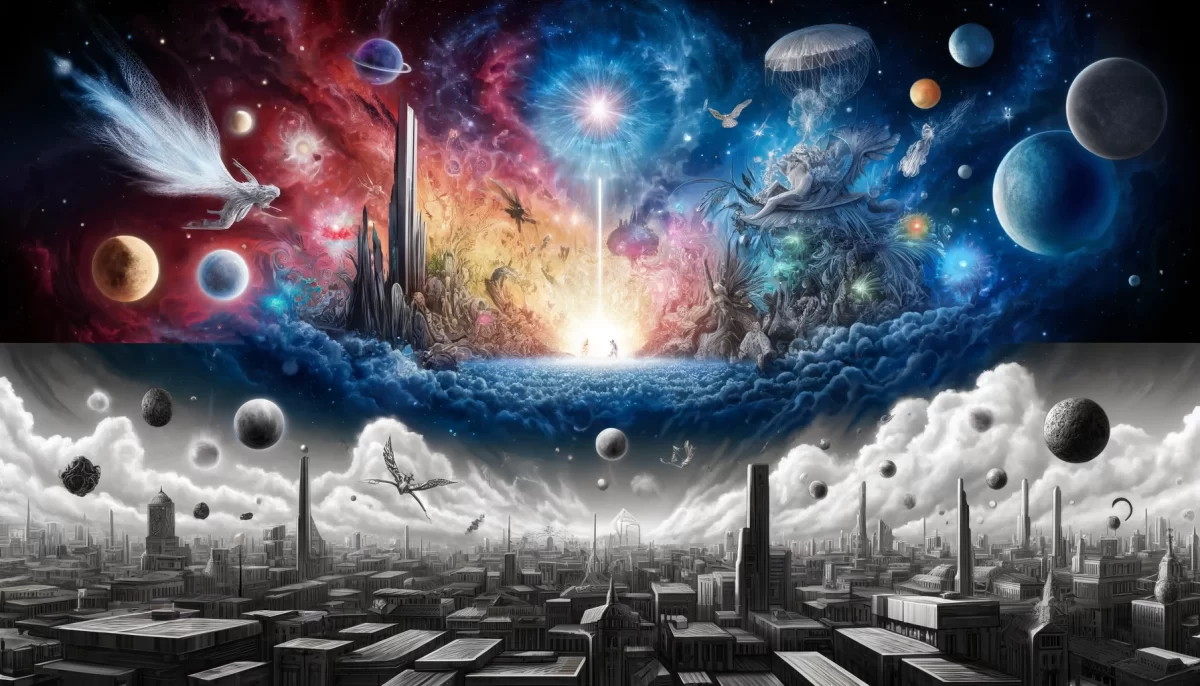

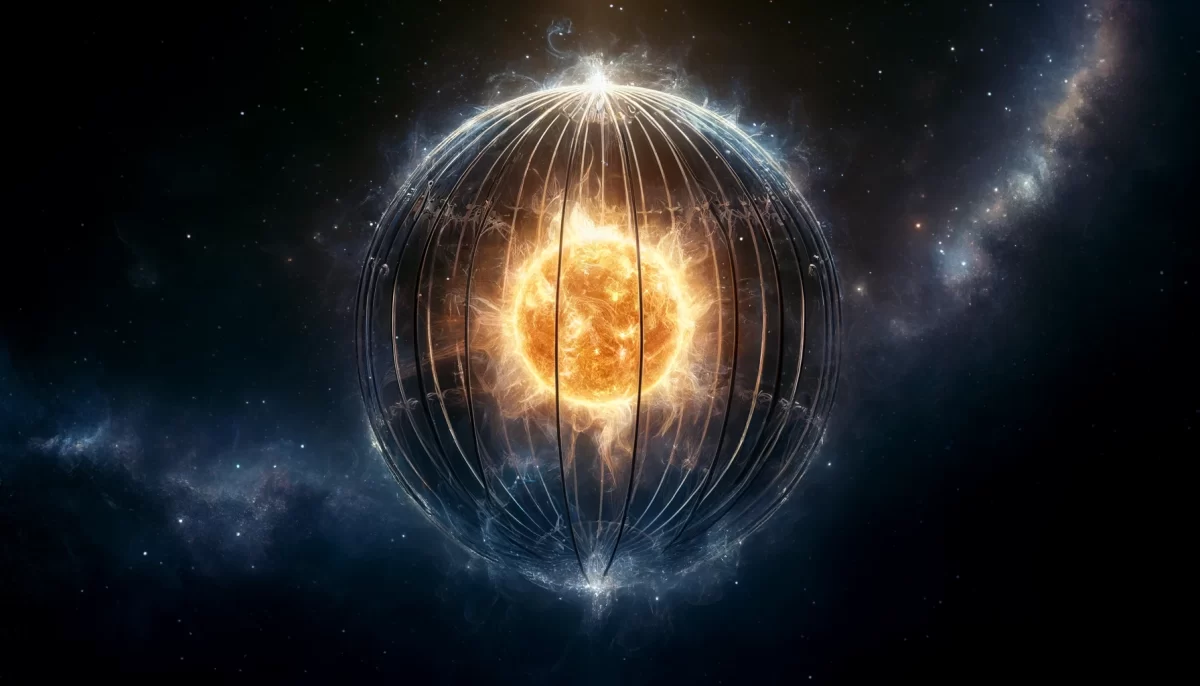













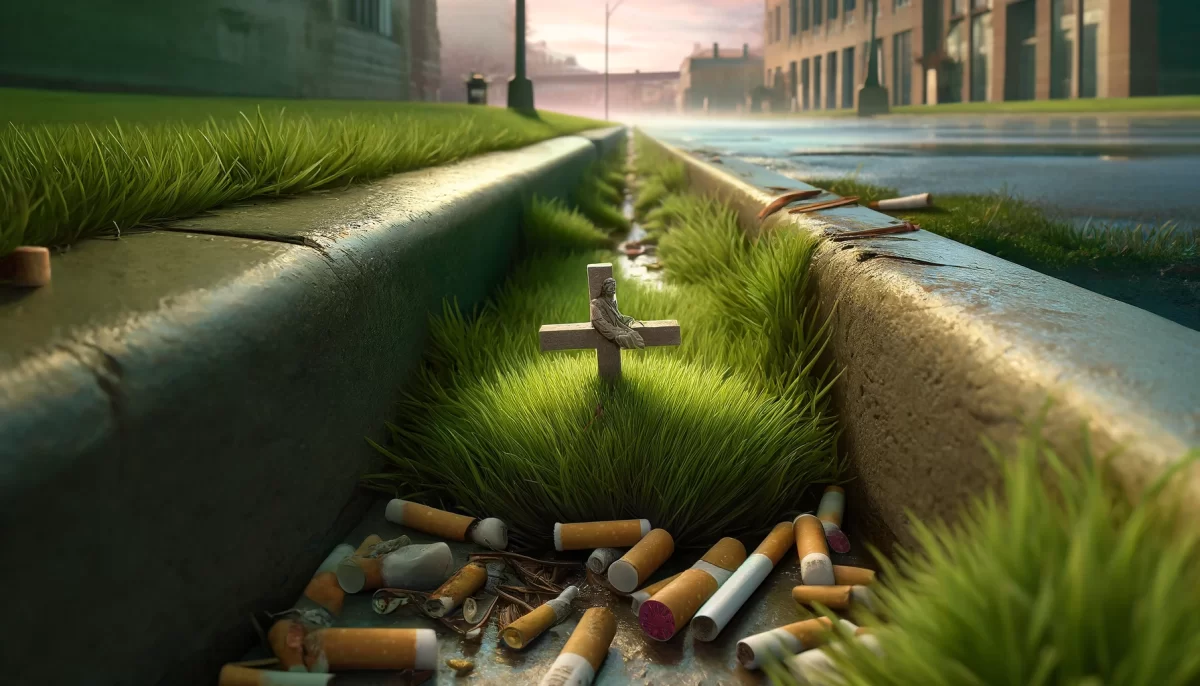
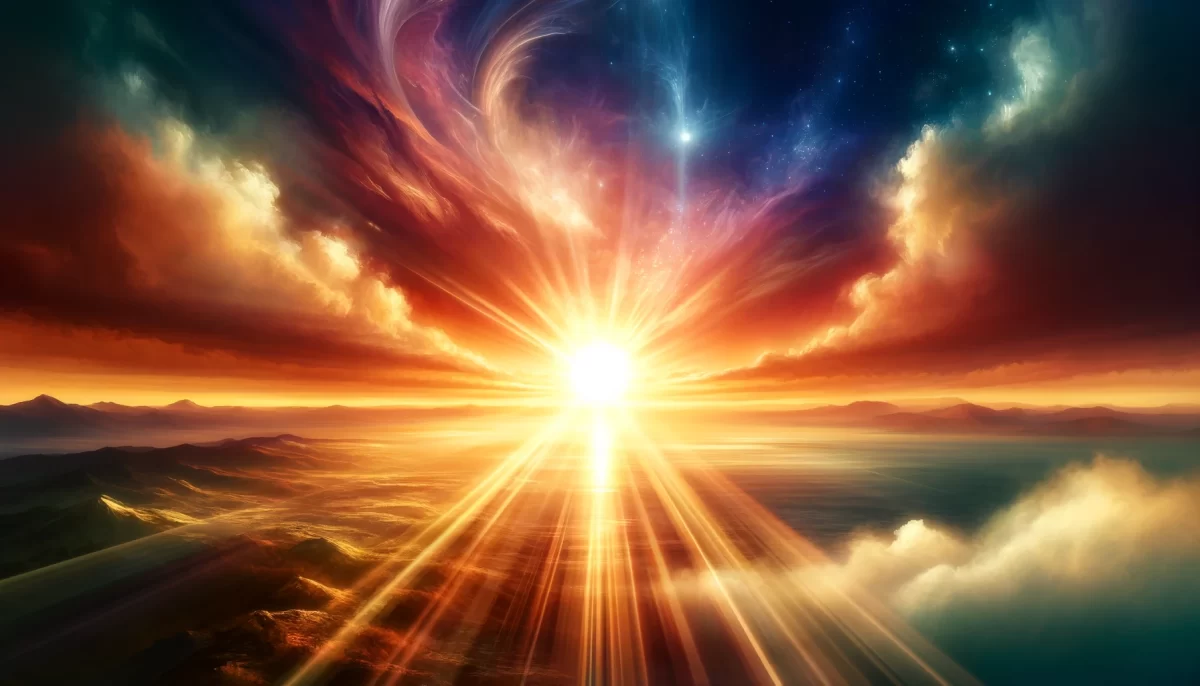
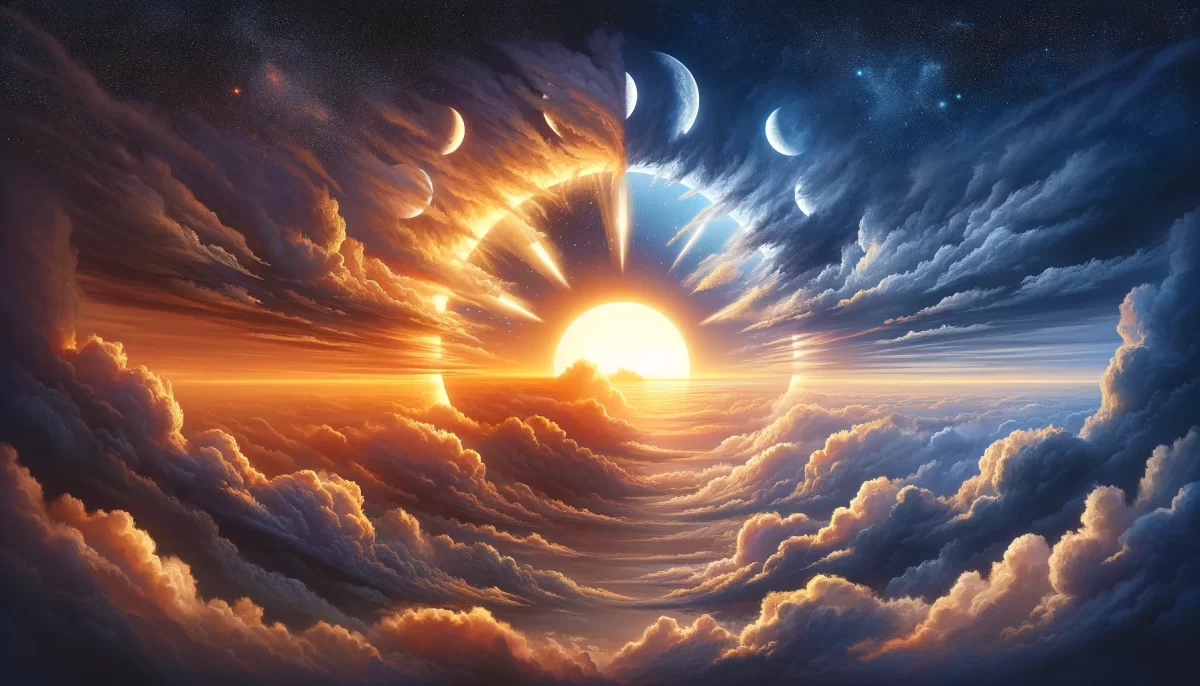
Leave a Reply